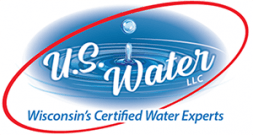Inorganic Water Tests
Understanding Inorganic Water Tests
Inorganic water tests are essential for anyone concerned about the quality and safety of their drinking water, particularly those who rely on well water. These tests analyze various inorganic compounds that can find their way into water sources, potentially impacting health and overall water quality. Whether you’re a homeowner, business owner, or community leader, understanding the composition of your water is crucial for ensuring its suitability for consumption and other domestic uses.
Well water, in particular, is susceptible to contamination from naturally occurring minerals and human activities such as agriculture, industrial runoff, and improper waste disposal. By identifying and addressing potential contaminants through inorganic water testing, you can take proactive steps to protect yourself, your family, and your community from the harmful effects of waterborne contaminants.
Common Inorganic Compounds
- Heavy Metals: Lead, mercury, cadmium, and arsenic are examples of heavy metals that can contaminate water sources. Even at low concentrations, these metals pose serious health risks, including neurological damage, kidney problems, and developmental delays.
- Minerals: Calcium, magnesium, and iron are common minerals found in water. While essential for health in moderate amounts, high levels of these minerals can affect water taste and cause scaling in pipes and appliances.
- Inorganic Ions: Chloride, fluoride, sulfate, and other inorganic ions are also tested in water. While many of these ions are harmless in small quantities, elevated levels can lead to health concerns and affect the taste and quality of water.
Inorganic Compounds We Test For
| Arsenic | Naturally occurring with sulfide minerals (e.g. pyrite). Used in storage batteries, ammunition, pesticides, and wood preservatives. Severe poisoning at 100mg; chronic effects from accumulation at low intake levels. WI State Standard for Drinking Water: 10 µg/L | Test at least once; more often if well has tested positive.* |
| Chromium | Used in alloys, electroplating, and in pigments. Non-essential for plants. Carcinogenic via inhalation and are corrosive to tissues. Concentrations in drinking water are correlated to alkalinity and hardness (the softer the water, the less chromium). WI State Standard for Drinking Water: 100 µg/L | |
| Copper | Widely used in electrical wiring, roofing, alloys, cooking utensils, and piping. Corrosion of copper pipes may introduce measurable copper amounts into the water system. Considered and essential trace element. WI State Standard for Drinking Water: 1.3 mg/L. | |
| Iron | Naturally occurring (e.g. minerals: hematite, magnetite, taconite, and pyrite). Used in steel and other alloys. Elevated levels of iron in water can promote staining, taste, and color. U.S. EPA Secondary Drinking Water Standard: 0.3 mg/L. | |
| Lead | Used in batteries, ammunition, solder, piping, insecticides, and alloys. Lead in water supply may originate from industry, mining, or plumbing. Non-essential for plants and animals. Toxic by ingestion and cumulative poison. WI State Standard for Drinking Water: 15 µg/L. | |
| Manganese | Elevated levels cause black staining on plumbing, laundry, and cooking utensils. Essential trace element for plants and animals. WI Secondary Drinking Water Standard: 50 µg/L |
**Information obtained from the Standard Method for the Examination of Water and Wastewater
22nd Edition. (2012). Washington: American Public Health Association
Health Concerns
The presence of certain inorganic compounds in water can have significant health implications. Heavy metals, for example, can accumulate in the body over time and cause severe health issues. Regulatory bodies like the EPA and WHO establish limits for these compounds in drinking water to protect public health.
Regulatory Limits and Guidelines
Regulatory agencies set limits for inorganic compounds in drinking water to ensure its safety for consumption. Exceeding these limits can render water unsafe for drinking and other domestic uses. It’s essential to test water regularly and adhere to these guidelines to safeguard public health.
Importance of Certified Water Test Labs
Having water tested by a certified laboratory is critical for accurate and reliable results. Certified labs follow standardized procedures and use state-of-the-art equipment to detect even trace amounts of contaminants. Results from certified labs are recognized by regulatory agencies, providing assurance of water safety.
Conclusion: Inorganic water tests play a vital role in ensuring the quality and safety of drinking water. By understanding the composition of water and the potential health risks associated with inorganic compounds, individuals and communities can take proactive steps to protect their health. Regular testing by certified labs is essential for maintaining water quality and safeguarding public health.
Take control of your water quality today. Schedule a certified water test with us to ensure the safety of your drinking water.
